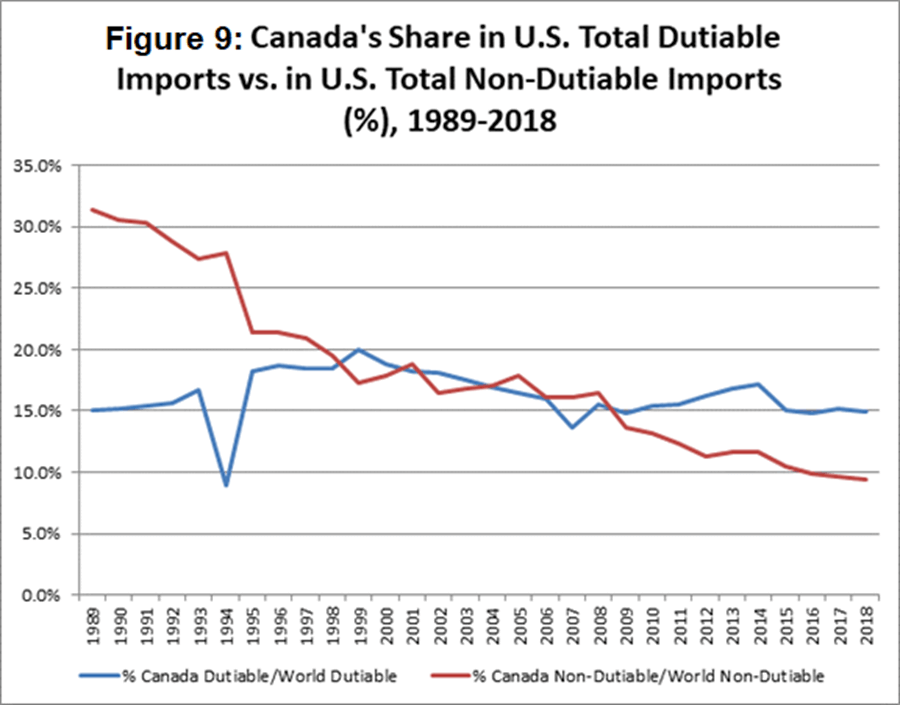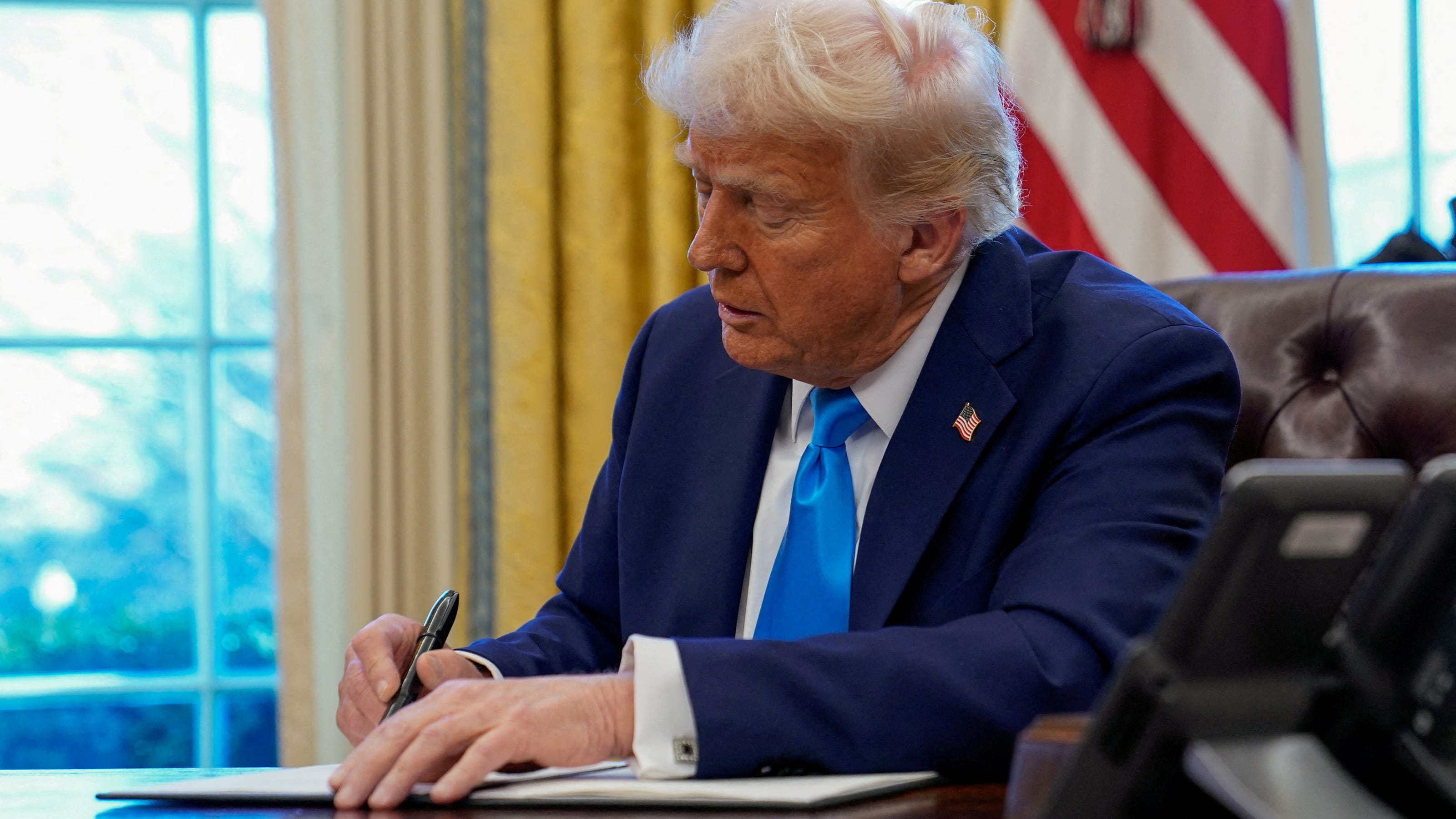Trump's CUSMA Assessment: Positive Outlook With Termination Clause

Table of Contents
Trump's Positive Assessment of CUSMA
Trump consistently presented a positive outlook on the revised CUSMA agreement, highlighting several key areas of improvement compared to its predecessor, NAFTA.
Improved Trade Balance and Manufacturing Jobs
A central tenet of Trump's CUSMA advocacy was its purported ability to bolster the US manufacturing sector and improve the trade balance with Canada and Mexico. He frequently pointed to specific provisions within the agreement, most notably the revised rules of origin for automobiles, as key mechanisms for achieving this. These stricter rules aimed to incentivize more US-based automotive production.
- Increased automotive production in the US: The revised rules of origin required a higher percentage of North American content in vehicles to qualify for tariff-free trade, theoretically encouraging more manufacturing within the US.
- Reduced trade deficit: Trump believed CUSMA would lead to a significant reduction in the US trade deficit with its North American neighbors.
- Protection of American jobs: A core component of his argument was that the agreement would protect and create American jobs, particularly in the manufacturing sector. This was a key campaign promise.
Strengthened Labor and Environmental Provisions
Another aspect Trump emphasized was the strengthening of labor and environmental standards within CUSMA. This was a marked departure from NAFTA and reflected the Trump administration's focus on addressing concerns regarding worker exploitation and environmental degradation in Mexico.
- Higher wages in Mexico: The agreement included provisions aimed at increasing wages and improving working conditions in Mexico's manufacturing sector.
- Improved working conditions: Stricter labor enforcement mechanisms were introduced to ensure compliance with improved standards.
- Enhanced environmental protections: CUSMA incorporated stricter environmental regulations to mitigate potential negative environmental impacts of increased trade.
Enhanced Intellectual Property Protection
CUSMA also incorporated stronger protections for intellectual property rights, a crucial area of concern for many US businesses. This was presented as a significant improvement over NAFTA, aiming to reduce the theft of US technology and designs.
- Stronger patent protections: The agreement included measures to better protect US patents from infringement.
- Copyright enforcement improvements: Mechanisms for enforcing copyright laws were strengthened to combat piracy.
- Reduced counterfeiting: CUSMA aimed to reduce the flow of counterfeit goods across borders, protecting US businesses from unfair competition.
The Significance of the CUSMA Termination Clause
While Trump praised the substantive improvements in CUSMA, the inclusion of a relatively easy termination clause was a unique and significant aspect of his assessment.
Trump's Leverage and Negotiation Tool
The ability for the US to withdraw from CUSMA with relatively short notice was viewed by the Trump administration as a potent negotiating tool. This clause provided leverage over Canada and Mexico, incentivizing compliance with the agreement's terms.
- Increased bargaining power for the US: The termination clause gave the US a powerful tool to influence the behavior of its trading partners.
- Deterrent to violations of the agreement: The threat of withdrawal could discourage either Canada or Mexico from violating the agreement's terms.
- Potential for future renegotiation: The clause could be used to pressure renegotiation of specific aspects of the agreement in the future.
Potential for Uncertainty and Instability
However, the termination clause also introduced a significant element of uncertainty into the long-term viability of the agreement. This potential for instability could negatively impact investment decisions and overall trade relations.
- Risk of trade disruptions: The threat of sudden withdrawal could lead to disruptions in cross-border trade and supply chains.
- Investor hesitation: The uncertainty surrounding the agreement's long-term stability could discourage foreign investment.
- Potential for retaliatory measures: The termination of the agreement could provoke retaliatory measures from Canada and Mexico, further disrupting trade.
Conclusion
Trump's assessment of CUSMA was multifaceted, celebrating improvements while simultaneously highlighting the strategic value of the termination clause. While he championed its potential to revitalize the US economy and create jobs, the inherent instability introduced by the termination clause remains a critical factor. Understanding both the perceived benefits and the potential risks associated with this clause is vital for comprehending the full impact of CUSMA on North American trade. To stay abreast of the ongoing implications of CUSMA and its future trajectory, continued research and analysis of the agreement’s performance and its effects on US trade relationships are strongly encouraged. Further research into the effects of the CUSMA (or USMCA) agreement is crucial for a complete understanding.

Featured Posts
-
 Universal Credit Overhaul Dwp Alters Claim Verification Process
May 08, 2025
Universal Credit Overhaul Dwp Alters Claim Verification Process
May 08, 2025 -
 Expert Prediction Hargreaves On Arsenal Vs Psg Champions League Clash
May 08, 2025
Expert Prediction Hargreaves On Arsenal Vs Psg Champions League Clash
May 08, 2025 -
 Cusmas Future Uncertain Trumps Approval Coupled With Termination Threat
May 08, 2025
Cusmas Future Uncertain Trumps Approval Coupled With Termination Threat
May 08, 2025 -
 Celtics Vs Nets Jayson Tatums Availability Tonight
May 08, 2025
Celtics Vs Nets Jayson Tatums Availability Tonight
May 08, 2025 -
 Wall Street Predicts 110 Growth For This Black Rock Etf By 2025 Is It The Next Billionaire Investment
May 08, 2025
Wall Street Predicts 110 Growth For This Black Rock Etf By 2025 Is It The Next Billionaire Investment
May 08, 2025
